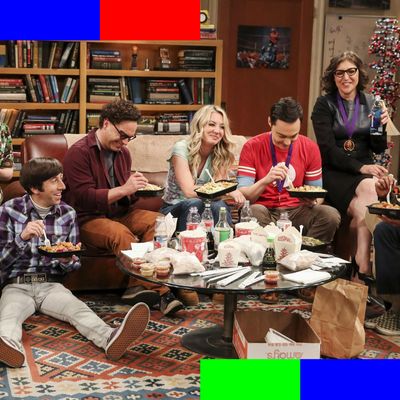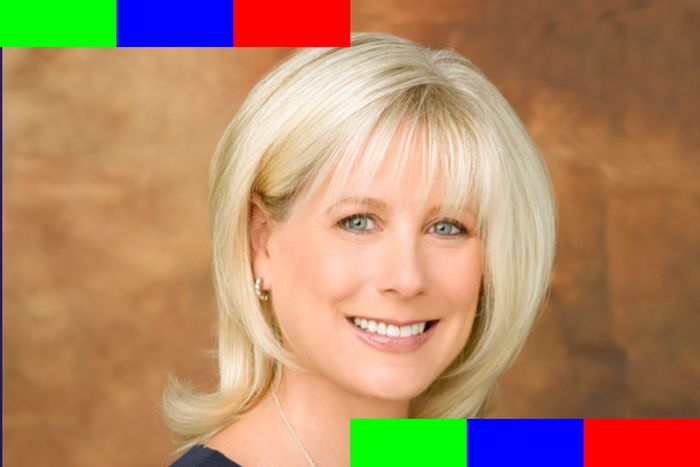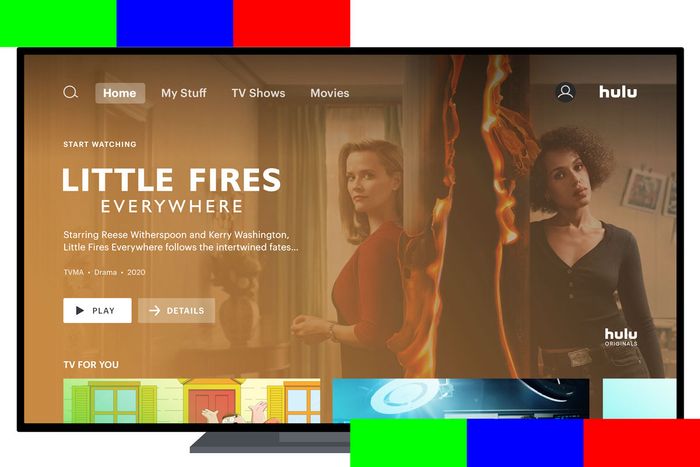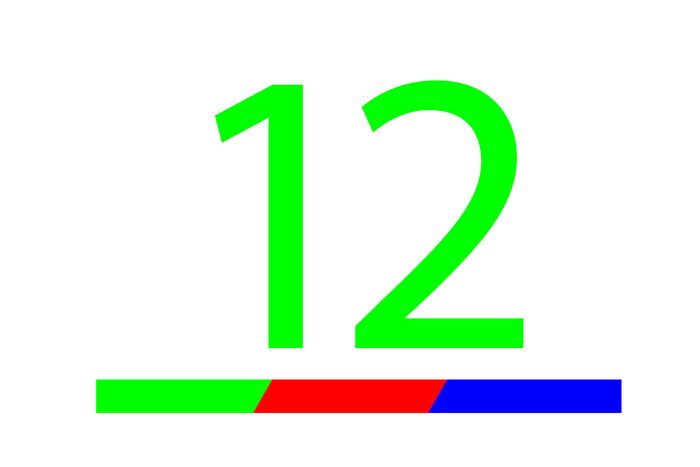
More than once during its nearly 50-year history, HBO has pushed forward TV’s evolution. Its 1972 launch as a regional cable network was itself a major milestone, ushering in the era of premium TV and the idea that consumers would pay for a specific channel. It pioneered the use of satellites to deliver TV programming when it became a national service in 1975. And on the programming front, HBO has transformed the medium again and again and
again (and a few more times in between).
Next week’s launch of HBO Max represents another significant chapter for the iconic TV powerhouse, but it’s unclear how much revolution will be involved. Cable’s most iconic brand is being leveraged by its owners at AT&T and WarnerMedia, who are using the storied network as the anchor for a new streaming platform designed to take on Netflix and position the company for TV’s nonlinear future. This week’s newsletter takes a look at some of the difficulties Max will face during its first few months, as well as its one big advantage over some of its competitors. We’ll also break down this week’s big changes at Disney’s streaming division and examine why Hulu is getting a design makeover.
HBO Max’s Big Week
After years of planning, AT&T-owned HBO Max finally arrives on Wednesday, and it starts off with a big advantage: millions of subscribers already locked in. That’s because a huge chunk of the 34 million or so folks who currently subscribe to HBO (either via a cable company, a live TV streaming service, or directly through HBO Now) will be able to use existing login credentials to access HBO Max. In many cases, they won’t have to create a new account, hand over credit-card information, or even create a password. They’ll just automatically be considered HBO Max customers.
From a marketing perspective, this is potentially a big deal. It means HBO Max begins life with a strong user base — potential viewers able to spread the word about the platform through either social media or old-fashioned word of mouth. One reason (okay, one of the many reasons) Quibi has struggled is because even with an extended free-trial period, it simply doesn’t have a lot of people regularly interacting with the service and talking up its shows. That shouldn’t be an issue for HBO Max.
And yet, even with this very real leg up, the newest combatant on the streaming battleground is facing several significant challenges right off the bat:
• Consumer confusion: It’s already borderline insane that there’s HBO, HBO Go, and HBO Now — and they’re all the exact same product. AT&T is now expecting Seth and Sally Streamer to grasp that (1) HBO Max is yet another way to get HBO (plus some other stuff), that (2) if you already have HBO, in most cases, you don’t have to pay another penny for HBO Max, and that (3) there is no reason to sign up for HBO Now in a world where HBO Max exists — though if you do sign up for HBO Now, you’ll be able to stream HBO Max, too. As AT&T looks to attract new subscribers, having so many offerings available could result in some consumers throwing up their hands in dismay and picking a more distinctive offering, like the Disney bundle.
On top of all that, a big chunk of TV consumers won’t be getting it right out of the gate: AT&T still hasn’t reached a deal with Comcast (the country’s biggest cable company), Roku, or Amazon’s Fire TV platform. Unless something happens in the next week, there will be many HBO customers unable to access Max at all — adding yet another layer of confusion to the platform’s rollout.
• The pandemic production pause: HBO Max boss Kevin Reilly this week told me that he’ll still be able to launch anywhere from 30 to 40 original shows and movies by the end of this year, even with shooting on almost all filmed entertainment shutting down in March because of the COVID-19 crisis. Because the platform had been scaling up quickly, its pipeline will still be populated with a lot of fresh content in coming months. Still, one really big planned 2020 premiere has now been delayed: The Gossip Girl reboot won’t be ready until next year, Reilly tells me. “They hadn’t even started production yet; they were in pre-production and ready to roll,” he says. Another high-profile project, the Kaley Cuoco–led series The Flight Attendant, has also been delayed until “later in the fall” or next year, he adds. “Things that would have been really meaningful and high profile have gotten pushed back,” Reilly says, calling it “really disappointing” not to have these signature shows as part of the first and second wave of shows.
• The $15 price tag: HBO Max is an amazing value if you’re already an HBO subscriber. Overnight, you get access to hundreds of classic movies (including the Criterion Collection); all of Friends, The Big Bang Theory, and South Park; and new original content. But Max’s success depends on signing up audiences who’ve so far resisted the lure of HBO, which at $15 per month has long been the most expensive premium cable network/streaming platform. And AT&T now has to make its case in the middle of what may be the worst economic downturn since the Great Depression. Huge swaths of the country are counting every nickel right now, and with Netflix and the Disney+/Hulu/ESPN+ bundle both promising as much (if not more) programming as Max at a lower cost ($13 per month), signing up new subscribers could prove difficult.
AT&T execs have said they want to get to 50 million HBO/HBO Max subscribers within five years. Given they’ve already two-thirds of the way there with the current HBO base, it’s a pretty reasonable goal and one the company shouldn’t have any problem meeting as consumers continue cutting the cord (and AT&T makes free HBO Max a key weapon in attracting and keeping its cell phone plan customers).
Another tool HBO Max will have to grow subscribers: The ability to snag content from corporate siblings at WarnerMedia and turn it into an event. We saw that this week with the carefully-orchestrated announcement that director Zack Snyder is being handed around $20 million (maybe more) to recut the 2017 Warner Bros. film Justice League, which started out as a Snyder film but became a Joss Whedon movie when Snyder had to leave the production following the death of his daughter. (I refuse to use the hashtag.) The new edit of Justice League will debut on Max next year, giving the service a tentpole title with which to juice sign-ups. How big a deal was this within the WarnerMedia empire? Reilly, a 30-year Hollywood veteran, artfully dodged on Monday when I tried to get him to respond to rumors that Snyder’s version of Justice League could be headed to his platform:
By the way, is one of the things you’re talking about — I have to ask for the internet — the Snyder cut?
[pause] I haven’t even heard of that. What is that?
You’re being snarky now, aren’t you?
No, I kid. That thing is … that thing has taken on a mythology of its own. I can’t even touch it. I can’t even touch it. So, I’m going to pretend we’re not even possibly talking about it.
Less than 48 hours later, Snyder tweeted out the news of his return to Justice League.
I’ll have a longer look at HBO Max next week, with a launch story on Vulture and some early impressions of the platform in next week’s Buffering.
Disney’s New Streaming Exec
There’s a new big cheese overseeing the Mouse House’s streaming kingdom. Disney this week put Rebecca Campbell, who’s been with the company since 1997, in charge of its direct-to-consumer/international division, giving her oversight of Disney+, Hulu, and Hotstar (the Netflix of India). Campbell got the gig following the sudden exit of former D-T-C chief Kevin Mayer, who’s headed to TikTok.
Early reports emphasized the “whoa” of Mayer’s departure, and understandably so: He’s been a hugely important exec inside Disney for years, and Disney+ had a spectacularly strong launch. Usually when corporate execs score such a big win, they get promoted. Instead, the man who helped build Disney+ and helped integrate Hulu into Disney is gone.
Not to minimize Mayer’s no-doubt considerable talents, but I don’t think his departure will end up being a bad thing for the company. Now that Disney has firmly established itself as a streaming power, the key to its future success will be growing its subscriber base. And the best way to attract new subscribers is with compelling new content. Mayer was never seen as a creative exec, and his exit will not deprive the platform of a programming visionary.
Campbell doesn’t come from the world of production, either. Her roots are in local TV management and, more recently, theme parks. But given all the different factions now quietly battling each other within the Disney streaming universe — Disney+ execs, the Hulu team, FX’s development braintrust (which now makes shows for Hulu) — having someone new to the streaming division might be a good thing. Campbell will be able to come in and assess the unit’s strengths and weaknesses with fresh eyes, improving on what Mayer and his team left her.
Room for improvement? Despite the general consensus that Disney+ has more than met expectations for its first six months, there are areas where the platform can do better. Yes, The Mandalorian was a breakout smash, and that’s huge. But there’s little indication that any of the service’s other original offerings have broken out with audiences. Most of the buzz in recent months has surrounded Disney filmed content arriving on the platform earlier than expected, from Frozen 2 to July’s debut of the Hamilton movie. Stellar marketing and acquisitions can only carry Disney+ so far. It needs great content, and more of it, to continue to grow. Figuring out the best way to expand that programming pipeline will be one of Campbell’s first big tasks.
Hulu’s New Look
Speaking of Disney streaming, Hulu this week started rolling out a brand new user interface to select customers. About 2 million users already have access to it; more will follow in the coming weeks. From what I’ve seen of it so far, it’s a definite upgrade over the old template: The look is cleaner and spiffier, and Hulu’s engineers wisely got rid of the vertical layout for scrolling through titles. That interface was definitely pretty to look at, what with the dramatic art used to highlight titles. But it also dramatically slowed down the process of searching for new shows, and made it seem like Hulu had far less content than it actually does.
The new design brings Hulu in line with other big platforms (including sister streamer Disney+) — and that’s by design, per a Hulu source. Viewers switching between streamers had to adjust their scrolling style when arriving at Hulu from, say, Netflix or Prime Video. That creates the potential for frustration, which is the last thing any streamer wants to do. (This is why Netflix finally gave in and let audiences disable autoplay previews, even though I continue to maintain my belief that autoplay is brilliant and very useful for discovering new shows. Don’t @ me.)
Is it actually better? I haven’t had a chance to fully check out the new user interface, so I’ll withhold final judgment on just how much of an improvement it is. But one area of concern: The new layout appears to give less information about a show while scrolling than before, often requiring users to click to see loglines or casts for shows and movies. That’s not a dealbreaker, but it’s suboptimal. Still, it’s a good thing Hulu keeps tinkering. The war for content rightly dominates discussion of how streamers are doing relative to one another, but things like user interfaces and algorithms are massively important, too. I will continue my nightly prayer vigil for Amazon Prime Video’s tragically awful interface, hopeful that one day soon the platform will have a design worthy of its ever more impressive content offering.
Want to Stream Something Different?
For the last month or so, we’ve been spotlighting smaller streamers worth checking out during this era of staying in. This week, picks for theater lovers, indie-movie fans, and folks looking for Latinx content.
Stage
A handful of recorded live productions is supplemented by a growing catalogue of original productions for theater nerds or those who are just theater-curious, including the comedy series Smash’d and the talk show Crossovers. There’s also a decent selection of dance programming, documentaries, and programming about performers and performances, such as 1982’s American Playhouse presentation of Who Am I This Time?, with Christopher Walken and Susan Sarandon as community theater actors.
Cost: $5 per month/$50 per year
MUBI
Tired of scrolling through endless rows of movies and not being able to pick one? This cinephile-centric service solves that problem with curation: It premieres and deletes one title every day, giving subscribers about 30 releases to watch each month. (Mubi even attaches a label to each title letting you know how many days left before it disappears.) Programming ranges from 1940s classics (Jean Renoir’s Oscar-nominated The Southerner) to recent Cannes films (Si Ling Hun’s 2018 film Dead Souls).
Cost: $11 per month/$96 per year
Pantaya
Studios Lionsgate and Pantelion Films are behind this Latinx-centric streamer featuring premium scripted series and about 300 Spanish-language movies (including some which have run while still in theaters in Mexico). Programming is a mix of acquisitions from other countries (including Drunk History: Mexico) and originals such as Ana and Vota Juan.
Cost: $6 per month
Fun With Numbers
CBS this week declared itself the winner of the 2019-20 ratings race, trumpeting Nielsen numbers showing that, for the 12th consecutive year, it will rank as the most-watched linear television network. Not so hot: With blockbuster hit The Big Bang Theory missing from the network’s lineup for the first time since 2007, the Eye’s average audience (including delayed viewing) slipped to 7.7 million viewers this season — down more than a million from last season (9 million). Still, given the cyclical nature of the TV business, holding on to a winning streak for a dozen years is no small feat.
Time Capsule: The Original Rona
Before Barbara Walters became the queen of celebrity TV interviews, a woman named Rona Barrett basically created the form. She became a national star with her gossip and interview segments on Good Morning America, but her best work may have been a series of daytime specials she did for CBS in the late 1970s and early ’80s. These were candid conversations with big names of the era such as Cher, Jack Nicholson, Carol Burnett, and Burt Reynolds. And unlike today’s TV interviews, micromanaged in advance by celebrity handlers, the questions were tough and the answers surprisingly honest. The good news: Earlier this year, six of these specials quietly showed on Amazon Prime Video, where they’re free to stream for anyone with a Prime subscription. Check out a clip from her chat with Cher above.
Parting Shot
“Everyone talks about HBO viewers like they’re rich librarians. HBO viewers do not just watch HBO. They also watch The Bachelor.”
— HBO Max original content chief Sarah Aubrey, talking to Financial Times about worries that Max might dilute the HBO brand.




